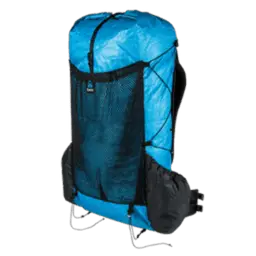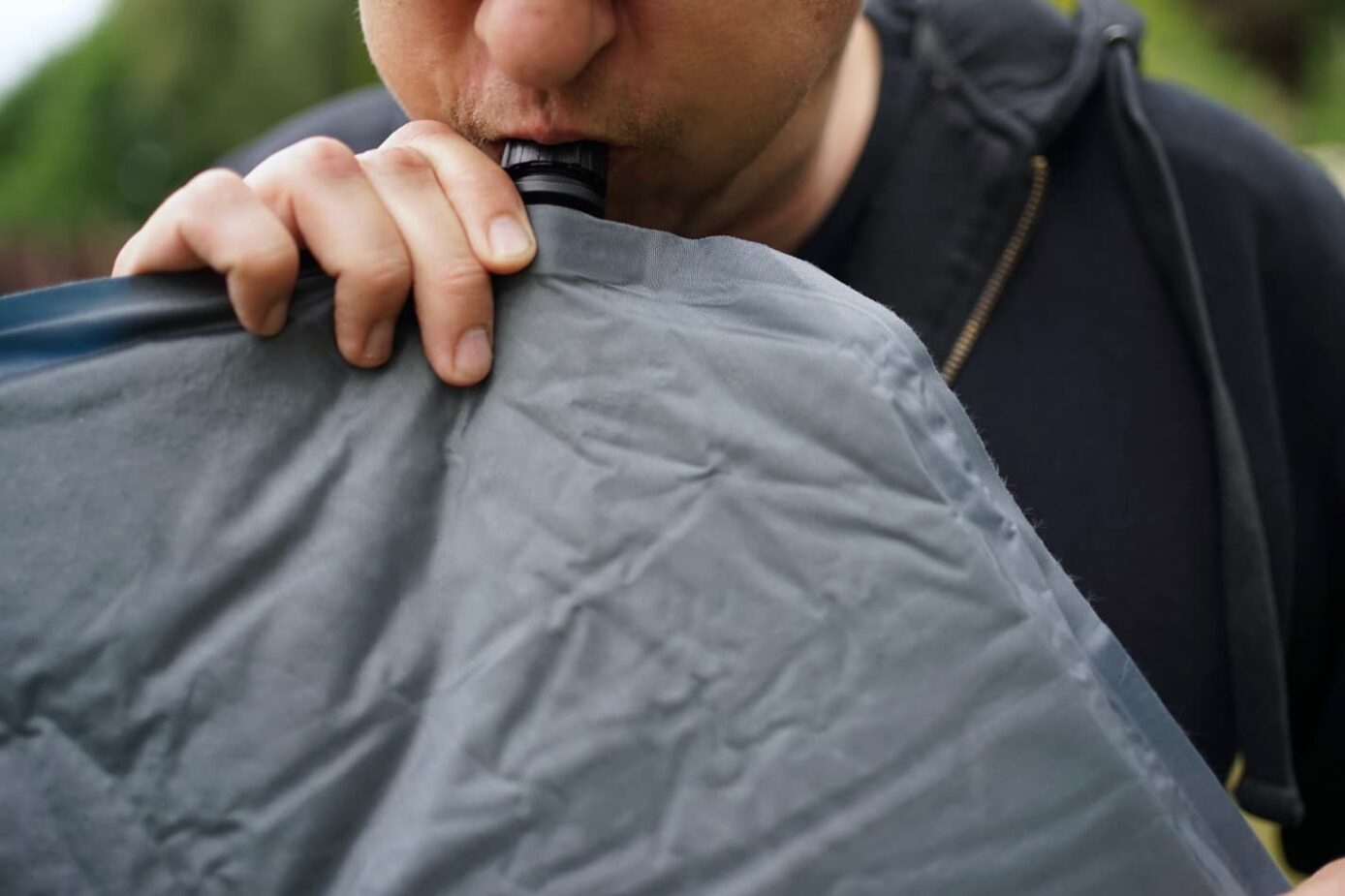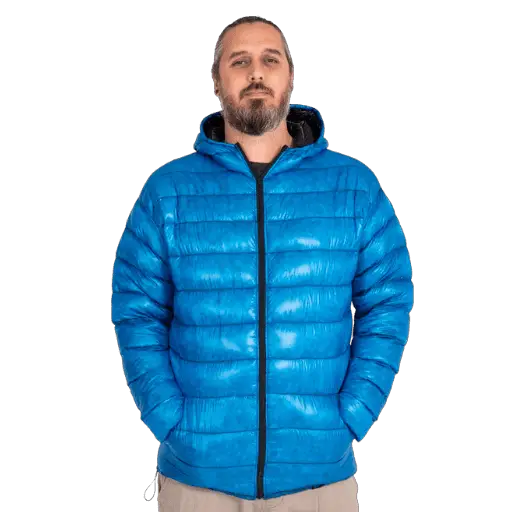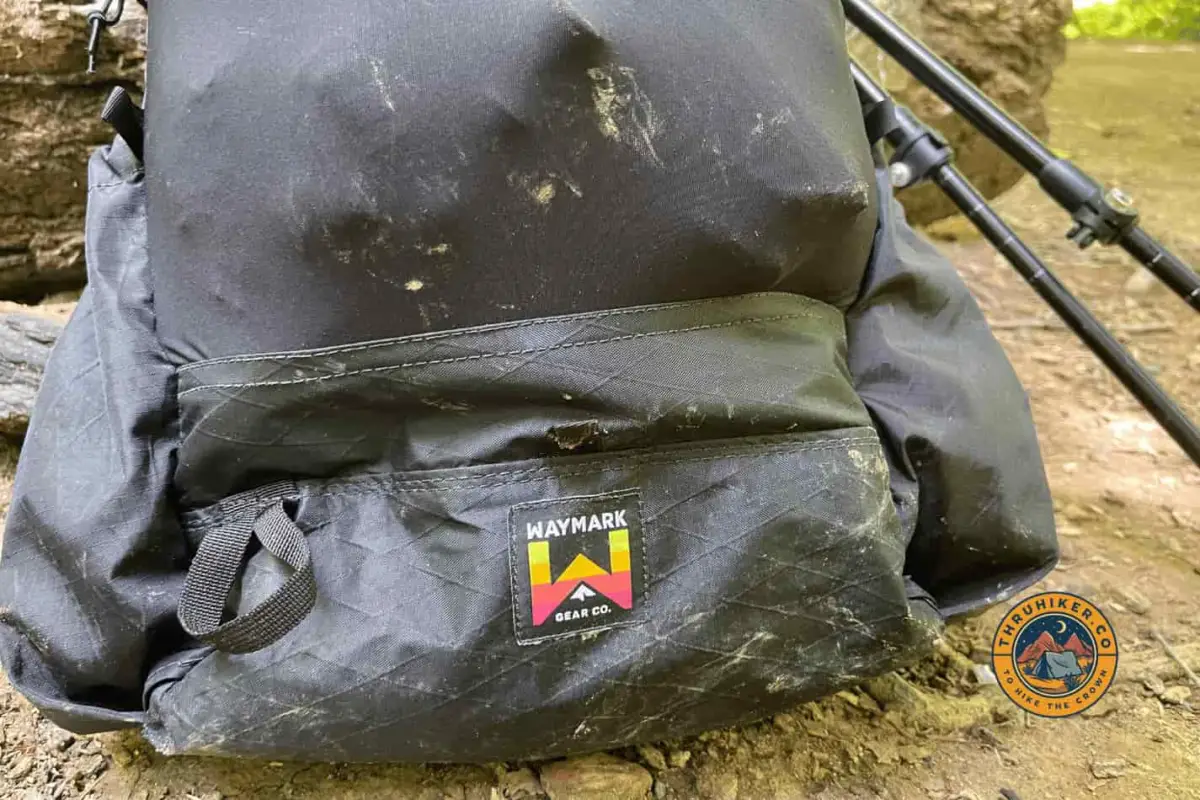While many know about the ten essentials for a hiking trip, a thru-hike pretty much needs to meet or exceed these all to be viable for a month or a longer trip, so I wanted to dive into what I consider to be the essential thru-hiking gear to have a quality trip and experience!
The average thru-hiker’s backpack includes various items, including the Ten Essentials. Let’s look closely at what you would (and wouldn’t) find inside an average pack. Hopefully to help guide you in making an efficient backpacking system for your next thru-hike.
Now that you understand that your gear needs to be built up from the ten essentials, we can dive into what the essentials would be for a thru-hiker.
Crafting Your Perfect Thru-Hiking Kit
At its most basic, these are the items you will need to survive and thrive while you are in the backcountry without access to resupply or help for an extended period.
The essential list for a thru-hiker is similar to the ten essential lists, with a few notable additions and subtractions.
Below is my essential thru-hiking gear list:
The Pulse of the Trail: Core Thru-Hiking Essentials
The essentials are, at their core, the basics to survive when everything goes south on you and when the world is trying to take you out, and is the minimal amount of gear you could choose to bring.
These essentials should come with you on any hike, from a day hike in the close hills to a thru-hike. As to a hiker preparing for a thru-hike, they tend to be much more thought out as you prepare for days alone.
The huge difference will be in weight; the longer time and distance you will be hiking, the less overall weight you will want to carry. Each ounce matters over the long haul.
Shelter

Something that frequently is discussed is your protection from the elements. For many, this will be one of two options, a free or semi-free-standing tent like the Nemo Hornet that uses poles to keep it up or a trekking pole tent that helps to drop additional weight, like the Zpacks Duplex.
When you don’t sleep well on the ground, you could choose to swap over to a hammock, and I currently use a Hummingbird Long Hammock system with a simple strap and whoopie sling setup, making it lightweight and simple.
For the extreme thru-hiker looking for a super ultralight shelter, a tarp could be used as it will have significant weight benefits while offering protection from the elements.
In addition, tarps take a while to learn to pitch, though, for expected weather and spot placement, and many trails have lots of bugs, so adding some form of mosquito netting would be advised.

Backpack
A backpack, while simple, is full of variability. For many people, a super simple HMG Windrider 55 with most space in the main compartment is how they like to carry their gear, many others want loads of exterior storage space like the Osprey Atmos AG 65 provides.
Neither is a bad option, both have qualities that serve their purpose, and you’ll have to decide what is essential for you based on your needs. I currently prefer fewer exterior pockets and use a 50L Zpacks Arc Air for most of my trips.
Then for the ultralighter, a backpack like the Waymark Gear EVLV or Zpacks NERO could cut down on weight and still provide all the essential functions of a thru-hiking backpack.
Top Quilt or Sleeping Bag
There are two trains of thought in sleeping comfort the backpacking top quilt or the more traditional sleeping bag.
A sleeping bag will offer more warmth in four seasons and less opportunity to be hit with a draft, whereas a top quilt will be lighter and often less expensive.

The key to your sleeping bag or quilt is that you understand limit versus comfort ratings and that your top quilt or bag is only to keep you insulated against the air. For the ground, you must focus on your pad.
I’ve used both, and I prefer the quilt for its comfort, weight savings, and ability to ventilate on warm nights.
You can check out all my gear here, but I use a Hammock Gear Economy Burrow 20-degree top quilt for my hammock nights and a 15-degree Outdoor Vitals Stormloft quilt for any tent nights.
A thru-hiking specific sleeping bag would be the Feathered Friends Swift YF 20, one of the lightest on the market and still offers down feathers for warmth.
As to fantastic quality and performance, I suggest a Katabatic Gear Flex, an excellent series rated at a “comfort” level to the temperature sold.
The other top-of-the-line quilt I would go with is the UGQ Bandit, and this quilt maker offers a load of customization to make precisely the quilt you want.
Sleeping Pad or Underquilt
Next will be your lower body insulation, a sleeping pad if you are a ground dweller, or an underquilt if you love hanging at camp.

Both offer different means of keeping in heat as a sleeping pad provides a “resistance” value to heat transfer to the ground, whereas an underquilt helps to fight drafts and to create a pocket underneath you of warm air to maintain heat.
For thru-hiking, you will be out in cold temperatures, but most of the heat lost will be in transference to the ground or air, so you need to look at sleeping pad R-Values and that they are ASTM rated and at least a 4+ rating.
This would lead you to sleeping pads that are tired and true for thru-hikers like the Therm-A-Rest XLITE, XTHERM, and then the Nemo Tensor.
Avoid cheap brands and their non-ASTM ratings or ask them to provide their ASTM; if they can’t, they aren’t rated correctly.
As to underquilts, you must ensure they are rated to the comfort level matching the temperatures you expect. If you sleep “cold,” then looking at a ten-degree lower rating will help you feel warm all night.
I recommend an underquilt from UGQ, Hammock Gear, or Jacks’R’Better, but many companies make amazing gear in the hammock realm!
Clothing

Clothing is a big variance as it will be based much more on the anticipated weather, temperatures, and humidity levels you will experience.
This is a broad and difficult topic to tackle here, but I suggest reading my article “Clothing on the Appalachian Trail,” as it will get you started in the right direction!
In short, start with a base layer that wicks away moisture, an insulating mid-layer, and then either a waterproof/breathable or windshell outer layer depending on the conditions you expect.
In addition, for the warmth, you will need a puffy jacket; the two favorites are the synthetic-based Enlightened Equipment Torrid Jacket and the goose-down Zpacks Down Jacket.
Footwear
The old world loved boots, but they also sported 50+ pound backpacks with the gear needed at the time, which required much more foot and ankle support.
In today’s ultralight world, you can ditch the boots for a much lighter and more comfortable option, the trail runner.
The two footwear options that have taken the thru-hiking world by storm are trail runners and ultralight hikers.
I went with Altra Lone Peaks (4, then 5, now 6’s) and never looked back; they were so comfortable right out of the box and have managed hundreds of miles without blisters or any issues.
I will say that many people go with Salomon, Hoka, Inov-8, or New Balance trail runners as they all have a great reputation in the industry.
If you have weaker ankles, though, the land on most trails is very unlevel, so you either need to take it slow with trail runners or maybe test and shakedown hike with boots so you can compare and contrast both options.
Water Filtering & Purification
There are many amazingly high-tech options available for cleaning your water and making it suitable for drinking; from the Sawyer Squeeze to newer options, you can’t go wrong with one as the basis for your kit.
The Sawyer Squeeze has been a long-time favorite of thru-hikers as it is lightweight, easy to use, and affordable. It can maintain a fast flow and last decades when well taken care of.
Newer players like the Katadyn BeFree have amazing flow rates, and it will be seen over time how they hold up and if they need more frequent replacement while on a trail, but the cool thing is that the space is ever evolving.
For those long backwoods trips, though, I recommend you bring purification tablets as a backup and just put them in the emergency kit just in case a filter should freeze and fail on the trail.
Hydration Reservoir / Water Bottle
Most thru-hikers will adopt smart water bottles or similar containers as their chosen water carry device; this makes the amount of water you still have easy to see and refills simple.
Hydration reservoirs are out of sight. This can lead to not knowing how much water you have at any moment, pairing that with complexity to remove from the pack to fill and pain in the read typically to put back in after filling, and you have a recipe for useless gear.
Additionally, Nalgene bottles were a mainstay in the hiking world. Still, they are very heavy and bulky, so plastic bottles have become favored for simple replacement while on the trail as every store has them and are very inexpensive.
First Aid / Hygiene
This is a thing many thru-hikers will skimp on when it is a small overall weight, your first aid kit doesn’t need to be insane, but it does need to have the key items.
I recommend you have at least the essential first-aid items: band-aids, moleskin, antiseptic wipes, tape, safety pins, painkillers/ibuprofen, and antihistamines.
Your kit needs to be your way to keep yourself moving on the trail, and you can bring many things but take time to evaluate what you have and how you could manage a laceration.
For the laceration example, these things infrequently happen, but you don’t want to be stuck in a vulnerable spot because you want to save grams.
Guidebook
It is always good to have a paper version of the trail with you, electronics can fail, but paper gives you a hard copy to fall back on!
Many people like the AWOL guide or something similar as they are lightweight and have essential data you may need while on the trail.
Some people also like to use apps like Guthook’s Hiker app, which has a lot of data but requires cell service for data like updates from other hikers but can work with the satellite-only part for positioning relatively well.
Near Essentials of Thru-Hiking
Some items are not needed but are highly suggested as they can make your experience more pleasant.
Trekking Poles
If you don’t have a trekking pole-style tent, you may think you can skip the poles. But when you are on multiple ascents and descents each day, those legs can get tired, and having your arms help to support some of your weight can be essential to a safe and comfortable hike.
They are also useful when crossing rivers as they can act as probes to test the depth or feel for any unexpected drop-offs; not only that, but as these LT5 poles can showcase, they can be ultralight weight in addition!
Stove / Cookware
The biggest fad is to go cold soaking which I discuss in detail here. Personally, though, I love it as I don’t care for warm foods, so it helps me lighten my load.
The trade-off is sometimes, after a long and hard day hiking in cold weather, people want something warm in their belly, so it is essential to consider your needs.
Then you have it as a secondary system to boil water to drink; this is essential to kill any nasties in the water you scooped from a stream or creek.
Headlamp
You will start your hike and end your hike on the triple crown in seasons where the light will end early and often before you are where you want to be; this is why I feel a headlamp is vital but not required for a successful thru-hike.
Hiking in the dark is very dangerous; you can quickly and easily get lost, fall off a cliff, or hurt yourself in many other ways. A headlamp lets you see where you are going and be safe on the trail when the sun goes down.
Luxury Items
Many older people will hike with items like a chair, which to a twenty-year-old may be considered silly and luxurious; these items will vary. Still, many can be essential to maintaining that willpower to complete a trail.
I’ve seen people quit on week-long hikes for not having a comfortable sleep where a pillow may have given them that good sleep they miss, but they wanted to shave the ounces and use clothing and a stuff sack instead.
Final Thoughts on Your Essential Thru-Hiking Gear
In the end, you need to have the essentials to consider starting, but from there, you can adjust what you bring to meet your needs. No one else can decide what is essential for you; that is a personal decision.
The only adjustment required is understanding the weather and terrain beforehand and making those changes before your hike. Also, be safe, have fun, and hike your own hike!
What are your thoughts on essential thru-hiking gear? Please let me know in the comments below! If you want to see all the deals on many brands’ gear, you can find them here. To see my choice of the best gear, you can read more about them here.


Leave a Comment